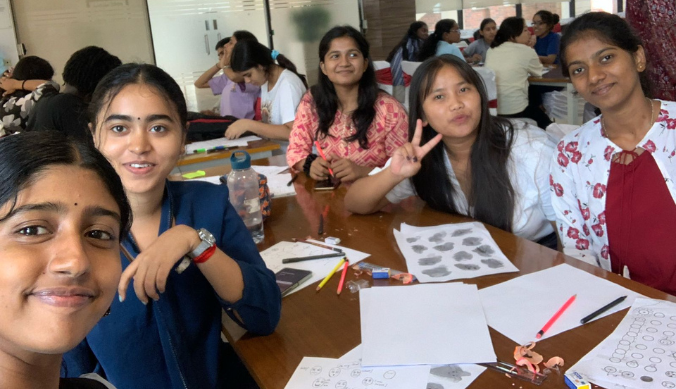Cellular Chronicles: Unravelling the role of Mitochondria in Ageing and Related Diseases
In this research project, Akshara aims to first develop a quality control pipeline for MitoSiM2 images to yield most accurate results, and then apply the method to study the role of mitochondria in senescence.
Akshara Kulkarni is from the ASP batch of 2024 pursuing research under the supervision of Prof. Kasturi Mitra at the Department of Biology. Mitochondria, known as cellular powerhouses, also influence various cellular processes, such as cell division, cell death, calcium and redox signalling. Senescence, where cells permanently stop dividing, contributes to ageing and age-related diseases. Malfunctioning mitochondria are a key factor in this. Exploring the role mitochondria could play in senescence, then, becomes an important question to further the understanding of age-related diseases, their mechanism and potential treatments.
Mitochondria form a dynamic network within cells, continually undergoing fission (fragmentation) and fusion (joining) events that affect their structural configuration (shape). Maintaining a nuanced balance between these processes is crucial for a cell’s optimal functioning. Quantitative methods are necessary to grasp any nuanced cellular property. Prof. Mitra’s research group, having developed quantitative single-cell level analyses of mitochondrial structure-function (MitoSinCe2), is now extending this approach to investigate this relationship at the level of single mitochondria (MitoSiM2). An exploration at this level is expected to uncover the heterogeneity that mitochondria display even within a single cell, further refining the understanding of the nuanced links between mitochondria and various cellular processes.
The primary objective of Akshara’s project is to gain quantitative insights into how mitochondrial structure influences the establishment of the senescent cell fate (when cells permanently cease further division). This will be achieved through the use of the MitoSiM2 approach, which involves monitoring single mitochondria.
In this research project, Akshara aims to first develop a quality control pipeline for MitoSiM2 images to yield most accurate results, and then apply the method to study the role of mitochondria in senescence. The lab has defined a pipeline for MitoSiM2 on live-cell images; she aims to similarly validate the approach for fixed-cell images so that she can link mitochondrial structure to levels of various protein expressions in cells. Using high-resolution fluorescence microscopy techniques, Akshara plans to measure structural details of mitochondrial networking properties with senescent markers and other relavent proteins in senescent cells. In her experiments, senescence will be induced using strong oxidising agents in human keratinocytes (skin cells).
Additionally, Akshara aims to analyse the data generated from experiments performed. Quality-approved images will be analysed using the MitoSiM2 approach. This will help studying; senescence in a quantitative manner. The group expects to address questions such as whether mitochondria in senescent cells tend to be longer or shorter, more connected, or less, and how a particular structural configuration affects the senescent properties of the cell.
Disease characterisation at the cellular level is the first step towards advancing care and treatment. Consequently, long term research goals involving the refinement of the understanding of cellular workings could pave the way for treatment innovations. By using a quantitative approach, Akshara and the larger research team, aim to explore the factors that drive senescence, thereby deepening the understanding of the specific role mitochondria may play in aging and diseases like Alzheimer’s and cancer, where there are high numbers of senescent cells.
Prof. Mitra expects this work to contribute to the larger field of mitochondrial biology by quantitatively illustrating the specific configuration of mitochondria that enable a certain cellular state, like they have already demonstrated for a mitochondria-primed stem cell state. Therefore, this line of work is expected to have significant impact in studying the nuanced role of mitochondria in healthy as well as various diseased states.
____________________________________________________________________________
Edited by Dr Yukti Arora
Study at Ashoka













